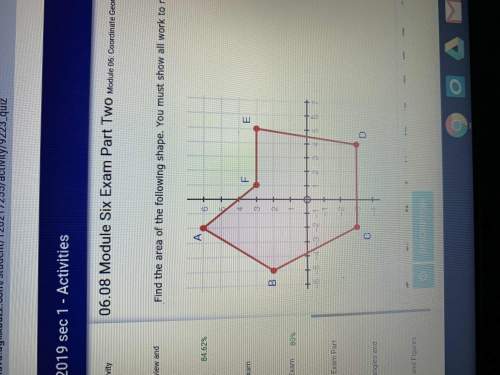
Mathematics, 07.05.2020 07:03 joannsrods
Let p: x = 4
Let q: y = −2
Which represents "If x = 4, then y = −2”?
p ∨ q
p ∧ q
p → q
p ↔ q

Answers: 2
Another question on Mathematics

Mathematics, 21.06.2019 15:30
Which of the following statements is not true? a.parallel lines are lines in the same plane that never intersect. b.congruent figures have the same shape and same size angles and sides. c.similar figures must have the same shape and the same size. d.a rotation is when you turn a figure around a certain point.
Answers: 1

Mathematics, 21.06.2019 17:50
F(x) = x2 − 9, and g(x) = x − 3 f(x) = x2 − 4x + 3, and g(x) = x − 3 f(x) = x2 + 4x − 5, and g(x) = x − 1 f(x) = x2 − 16, and g(x) = x − 4 h(x) = x + 5 arrowright h(x) = x + 3 arrowright h(x) = x + 4 arrowright h(x) = x − 1 arrowright
Answers: 2

Mathematics, 21.06.2019 18:30
What is coefficient of the term of degree of degree 5 in the polynomial below
Answers: 1

Mathematics, 21.06.2019 19:30
Which inequality has a dashed boundary line when graphed ?
Answers: 2
You know the right answer?
Let p: x = 4
Let q: y = −2
Which represents "If x = 4, then y = −2”?
p...
Let q: y = −2
Which represents "If x = 4, then y = −2”?
p...
Questions



English, 15.07.2020 05:01

Mathematics, 15.07.2020 05:01



English, 15.07.2020 05:01

Mathematics, 15.07.2020 05:01


History, 15.07.2020 05:01




Mathematics, 15.07.2020 05:01


History, 15.07.2020 05:01

Mathematics, 15.07.2020 05:01

Mathematics, 15.07.2020 05:01







